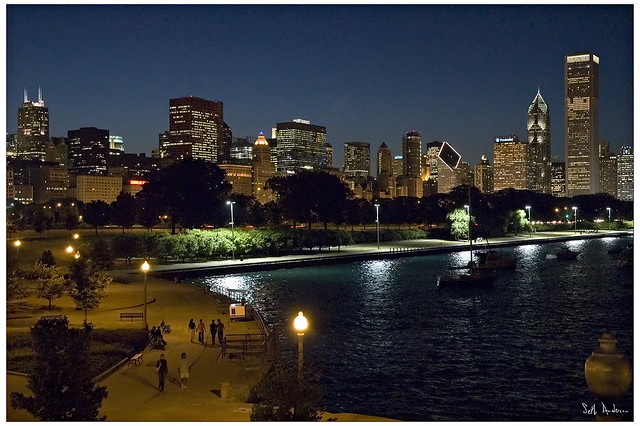Rebecca Solnit eloquently writes about the rural bubble that racists like Charles Murray want the rest of us to enter:
The exhortations are everywhere. PBS News Hour featured a quiz by Charles Murray in March that asked “Do You Live in a Bubble?” The questions assumed that if you didn’t know people who drank cheap beer and drove pick-up trucks and worked in factories you lived in an elitist bubble. Among the questions: “Have you ever lived for at least a year in an American community with a population under 50,000 that is not part of a metropolitan area and is not where you went to college? Have you ever walked on a factory floor? Have you ever had a close friend who was an evangelical Christian?”
The quiz is essentially about whether you are in touch with working-class small-town white Christian America, as though everyone who’s not Joe the Plumber is Maurice the Elitist. We should know them, the logic goes; they do not need to know us. Less than 20 percent of Americans are white evangelicals, only slightly more than are Latino. Most Americans are urban. The quiz delivers, yet again, the message that the 80 percent of us who live in urban areas are not America, treats non-Protestant (including the quarter of this country that is Catholic) and non-white people as not America, treats many kinds of underpaid working people (salespeople, service workers, farmworkers) who are not male industrial workers as not America.
More Americans work in museums than work in coal, but coalminers are treated as sacred beings owed huge subsidies and the sacrifice of the climate, and museum workers—well, no one is talking about their jobs as a totem of our national identity.
PBS added a little note at the end of the bubble quiz, “The introduction has been edited to clarify Charles Murray’s expertise, which focuses on white American culture.” They don’t mention that he’s the author of the notorious Bell Curve or explain why someone widely considered racist was welcomed onto a publicly funded program. Perhaps the actual problem is that white Christian suburban, small-town, and rural America includes too many people who want to live in a bubble and think they’re entitled to, and that all of us who are not like them are menaces and intrusions who needs to be cleared out of the way.
(click here to continue reading Rebecca Solnit: Whose Story (and Country) Is This? | Literary Hub.)
We’ve discussed this before a few times. The rural voters may have disproportionate power in Congress, but they don’t have much cultural power. Urbanites are not clamoring to move out to small towns in Alabama or Iowa, places where the Walmart and four Protestant churches are the sum total of cultural life. Not all rural folk are racist assholes wallowing willfully in their ignorance, by the way. And in truth, there are liberal-minded folk all over the country, even in pockets of small town America. Jefferson’s America is long, long gone though.
I actually have lived in rural America, years ago, albeit not by choice. I have no desire to move back.
I mean, sure, who wouldn’t like being wealthy enough to have a place to go and unwind, some isolated thousand acre ranch in beautiful country, maintained by staff, but I wouldn’t want to live there more than a few weeks a year.
Back to the main point, why aren’t there a gazillion think pieces on the bubble of the rural Trump supporter? Coal jobs are not coming back, women are going to be able to vote, and drive, and make reproductive decisions for themselves; and non-white people are going to have civil liberties and be able to vote for their own interests. Supporting reactionaries like Trump and Scott Pruitt and the like is not going to alter the march of human history towards inclusion.
Quoting myself:
As somebody said on the internets (sic), the corporate media and the political chattering classes are treating the Trump base as if they are superdelegates. These reactionaries who voted for Trump despite all the warning signs of Trump’s incompetence are never going to be convinced to vote for progressive policies, why do we need to devote so much effort trying to cater to them? Are the Deplorables the only citizens who matter? Why not spend resources convincing the sometime voters who lean left to come to the polls instead?
(click here to continue reading Democrats Can Retake the House in 2018 Without Converting a Single Trump Voter at B12 Solipsism.)





















